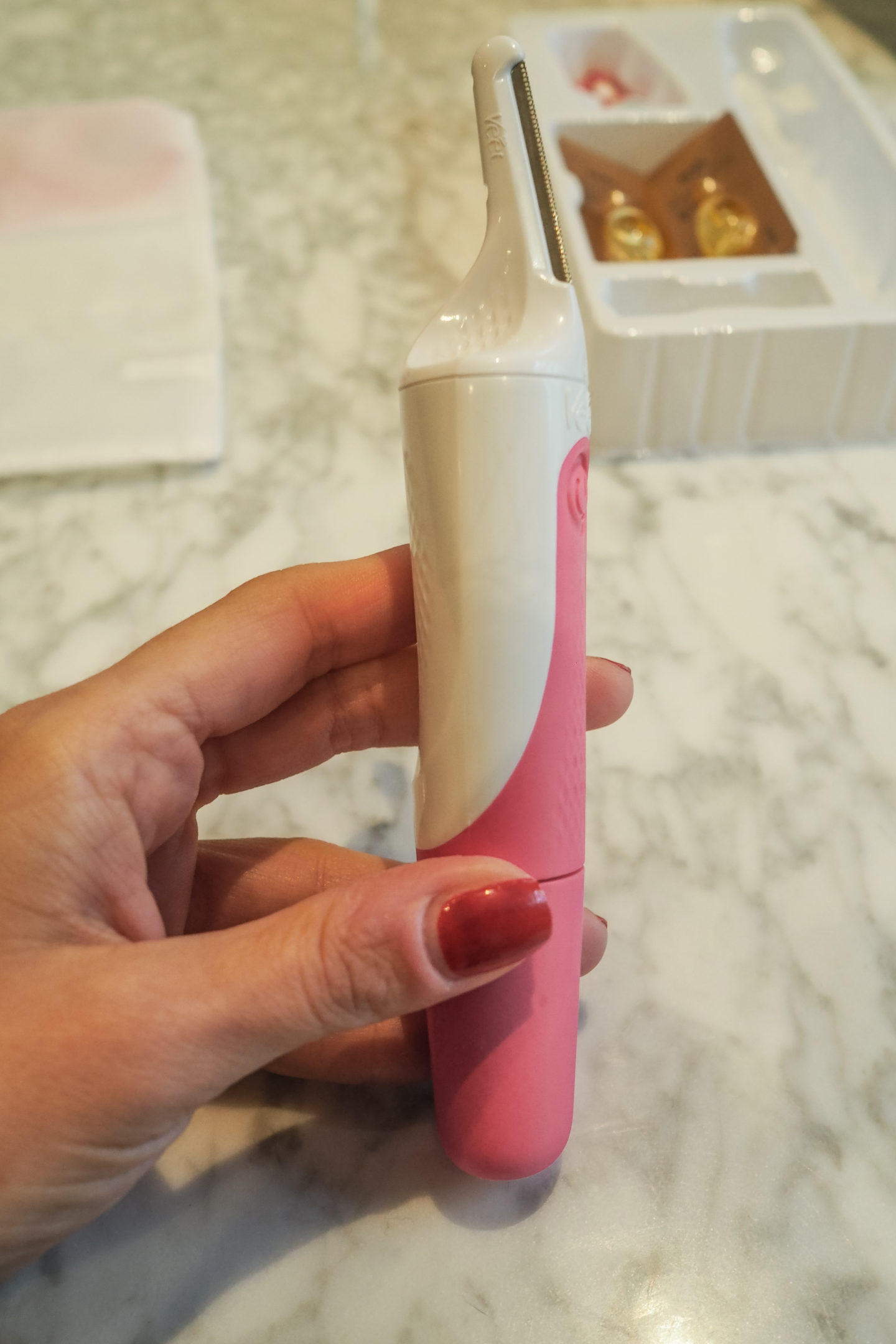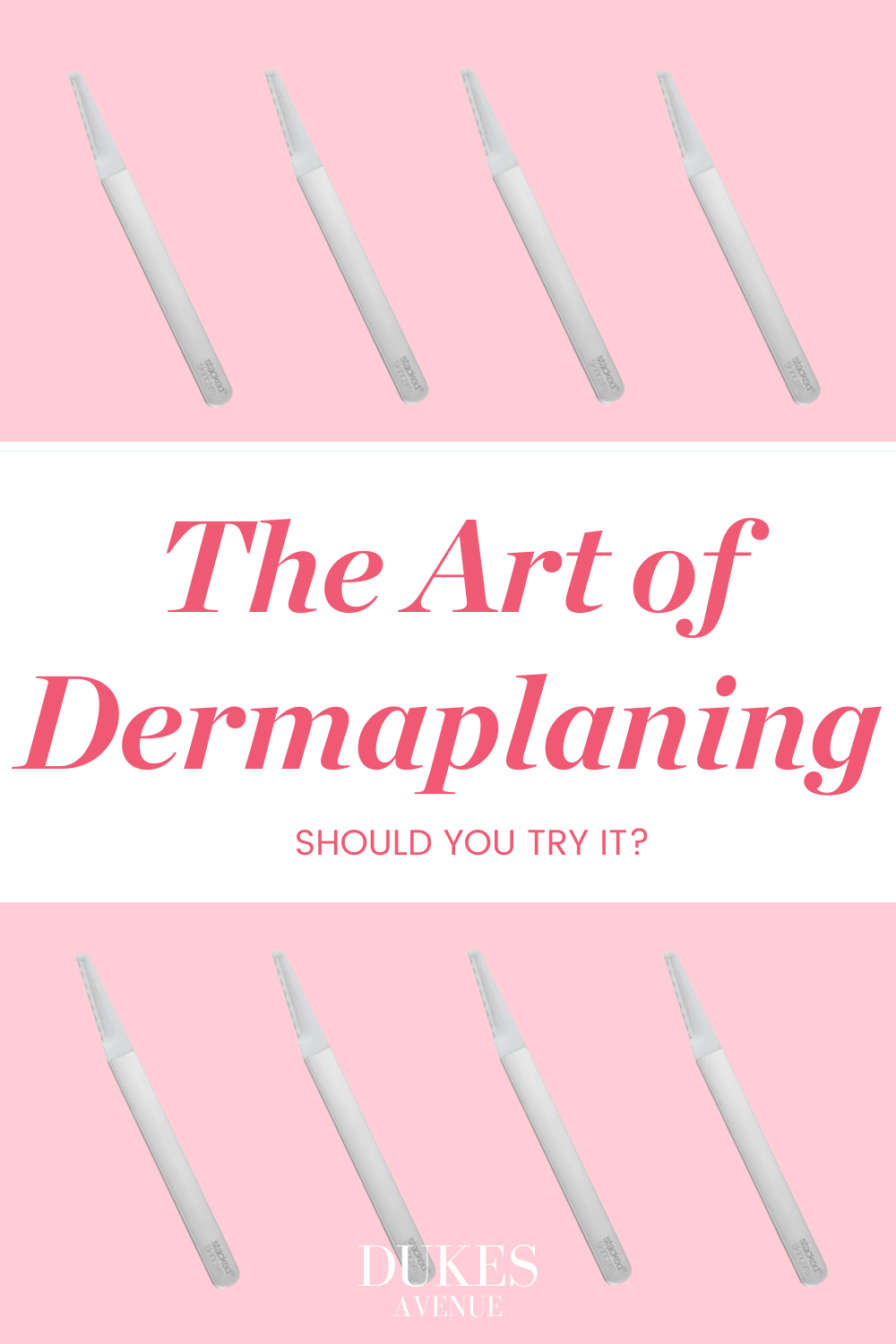Article Cover Photo: © Jacob Lund from Getty Images via canva.com
This post is all about dermablading or dermaplaning and why it’s worth trying!
Dermablading? You mean, shaving your face?! Well, not quite…
Dermablading has become an important part of many women’s skin care routine – and with all the benefits this simple procedure provides, it is hardly surprising.
“Really? What does it do?” We’re glad you asked! At it’s core, dermablading is a simple procedure that exfoliates the skin and removes dirt along with vellus hair – what many of us know as ‘peach fuzz’. It scrapes away your dead skin cells and allows your face to absorb skincare products more efficiently. This encourages a healthy glow, smoother complexion, even skin tone and overall, more radiant skin, and thus allowing for better makeup application. Sounds ideal right?
But before getting ahead of ourselves, let’s take a few steps back and address a few common, dermablading related queries. We’re covering everything you might want to know about the art of ‘shaving your face‘ in the Dukes Avenue Guide to Dermablading.
This article contains affiliate links
What is Dermablading?
Also known by the term “dermaplaning”, dermablading is a type of manual exfoliation, just like a traditional face scrub.
When done professionally in a salon, aestheticians use a very small, sterile surgical blade to gently scrape away the very top layer of your skin and remove dead skin cells. But, unlike traditional scrubs, dermaplaning treatment also gets rid of any annoying peach fuzz and leaves your skin feeling silky smooth. Essentially, it is a non-invasive, facial treatment which smooths out your skin and also creates a better base for when you apply makeup.
Whilst dermablading is offered at many salons, it is easy enough to do at home if you have the proper tools, and we’ve included our favourite tried and tested dermaplaning kits later on in this article.
Is Dermablading the Same as Shaving?
Not quite. Whilst many enjoy dermablading as it removes pesky peach fuzz, it’s not actually about hair removal, but more about exfoliating and removing dead skin cells. It just so happens that in the dermablading process, those delicate vellus hairs are also removed.
If you’re concerned about these growing back darker and thicker, fret not. This is a common myth! Sure, it may feel a little courser as the hair starts growing back, but this has to do with the way each hair was cut. They will still grow back in the same thickness and length – it’s not actually biologically possible for your hair to get darker and thicker due to shaving.
If you’re on the look out for facial hair removal methods for thicker hair in areas such as the upper lip or eyebrows, you’re better off discussing more traditional options with your aesthetician such as electrolysis, waxing or laser hair removal.
Is Dermablading Safe?
Dermablading is a very low-risk procedure and safe for virtually anybody. If you are completely new to dermablading and want to better understand how it is performed before trying it yourself at home, you might want to schedule a consultation with an aesthetician or see how your skin reacts to your first treatment. Keep in mind that this treatment is entirely non-invasive and appropriate for most skin-types, making it a safe skin care treatment to try out.
Can Dermablading Cause Acne?
According to Dr Joshua Zeichner, director of cosmetic and clinical research in dermatology at Mount Sinai Hospital, dermablading should not cause acne if done correctly, and with the proper pre- and post-care.
If you’re not in the middle of an active breakout, or if you’ve previously struggled with acne and acne scarring, then dermablading is something worth considering. By scraping away your dead skin cells and getting rid of your peach fuzz, you’ll be unclogging your pores and diminishing the risk of producing acne. Additionally, after dermablading, your skin will more readily absorb skin care products, including those used to fight acne, making your skin more receptive to your usual acne treatments. Dermablading can also help with acne scarring by evening out the skin tone.
That said, if you do suffer from acne at present, have active breakouts or cold sores it is best to avoid dermablading until consulting with your dermatologist.
How Often Should You Dermablade?
Our skin naturally regenerates skin cells, so dermablading is not a long-lasting treatment. Depending on the results you wish to achieve and your own skin’s needs, it is recommended that you dermablade every two to six weeks.


Dermablading / Dermaplaning Benefits
Dermaplaning offers heaps of benefits, and here are some you can expect:
- Removes vellus hair (peach fuzz) which tend to trap dirt and oils
- Diminishes the appearance of fine lines, wrinkles and acne scarring by evening out the skin tone
- Scrapes away dead skin cells and promotes skin cell regeneration for a more youthful look
- Pores appear smaller and cleaner
- Promotes more effective skin care product absorption
- Creates smoother skin
- Gives you a better canvas on which to apply cosmetics
Dermablading / Dermaplaning Side Effects
Dermaplaning is a safe and low-risk procedure. Some people might experience some minor redness for a few hours after getting the treatment, while others might also notice whiteheads developing for a day or two after the procedure.
According to Dr Melissa Kanchanapoomi Levin, New York City-based dermatologist and founder of Entière Dermatology, “you should avoid it if you have a tan, sunburn, active acne, a flaring rosacea breakout, or an inflammatory skin condition such as eczema or psoriasis, as the procedure can worsen these issues”.
How to Dermaplane!
Dermaplaning at the Clinic
Of course, you can get your dermaplaning treatment done professionally. With this option you’ll have the peace of mind of being treated by a trained aesthetician or dermatologist whilst you simply sit back and relax. However, when you get dermaplaning done by a professional you’ll most likely be forking out between $75 to $250 depending on where you live.
Dermaplaning at Home
If heading out to a salon to experience dermablading is a little outside your monthly budget, dermablading or dermaplaning at home is another option to consider and you can do this in a few simple steps. Here’s how:
Step 1: Preparation
For the best results, first you’ll need to wash your face with a good cleanser to make sure you avoid driving dirt deeper into your pores. Then, pat your face completely dry.
Follow this up with your choice of toner in order to hydrate your skin before starting the treatment. Allow your skin time to absorb the toner and become suitably dry before you pick up your clean, dermaplaning tool of choice (scroll down to see what dermaplaning tools are on the market!)
Step 2. Start Shaving
Now the interesting part starts! Hold your skin taught with one hand, whilst angling your blade at a 45 degree angle with your other hand. Shave using delicate, short and upward strokes – starting from one side of the face and working your way all around your face. This process is entirely painless but do proceed carefully to avoid any unnecessary cuts and nicks.
Step 3. The Finishing Touches
As soon as you finish the shaving process, which shouldn’t take longer than five to ten minutes, it’s time to treat yourself with your favourite serum and moisturiser – especially those with hyaluronic acid. Simply ensure that the skin care products you use are suitable for sensitive skin, as your skin will be a little more delicate after dermaplaning. You may also want to avoid using any other exfoliants for the next seven days, so as not to cause any additional irritation.
Dermaplaning Kits for Home Use
Now that you know what to do, let’s make sure you have everything you need for your lush, dermaplaning treatment at home. There are a choice of tools on the market ranging from budget friendly to higher priced luxury items. With all the choices available, picking the right one for you can become a confusing or overwhelming process so we’ve narrowed the options down to a few choice items that come highly recommended.
Budget-Friendly Options
Hydro Silk Touch-Up Dermaplaning ToolSchick
This dermaplaning tool by Schick is budget-friendly and effective! Its built-in micro guards prevent you from accidentally scratching your skin and if you wanted to use it for hair removal, it also comes complete with an additional attachment that allows you to shape your eyebrows with precision! We love how easy this tool is to use, as well as its convenient versatility and affordable price.
Eyebrow Razor, Hair Trimmer Shaver and Touch Up Tool by Tinkle
Tinkle’s eyebrow razors are originally designed for easy eyebrow shaping from home, however, many have discovered this simple tool’s dermaplaning potential. These Tinkle razors get the job done painlessly and with astonishing efficiency making this one of the most popular, low-cost dermablading tools.
Mid-Priced Options
Veet Sensitive Precision Dermaplaning Face Kit
The Veet Sensitive Precision Face Kit is perfect for anyone that’s new to dermablading. The comfortable handle ensures a solid grip, and makes it easy to find that perfect 45 degree angle. The kit also comes complete with two mini doses of Veet Miraculous Oil, as well as a handy pouch for storage. It is recommended to replace the blades with refills after each use.
Dermaplaning Exfoliating Tool by Stacked Skincare
Stacked Skincare’s Dermaplaning Exfoliating Tool consistently makes it into recommended dermaplaning kit lists, and according to their website, has been rated 4.8/5 out of 934 reviews! Designed in 2016 using patent pending technology, the tool is designed to optimise user control, with each blade lasting about four uses before it needs replacing. Overall, this tool boasts effectiveness and ease of use. About Stacked Skincare’s dermablading tool, Dr. Sheila Farhang says “I like that it has the round thicker handle which makes it easier to get the right angle.”
Luxury Options
Sonicsmooth Sonic Dermaplaning ToolMichael Todd Beauty
With the Sonicsmooth dermaplaning tool we are entering the professional side of the dermaplaning spectrum. It is equipped with three varying speeds from which to choose from, cord-free convenience and a rechargeable built-in battery that offers 3 hours of use. The sonic technology adds to this tool’s efficiency and it comes complete with skin care products that help your face remain luxuriously smooth.
LUXE Anti-Aging Exfoliation Device by DermaFlash
The DERMAFLASH LUXE Anti-Aging Exfoliation Device is admittedly one of the pricier choices on the market but, we’re inclined to think it’s worth the cost. This tool is electric, relying on stainless steel and sonic vibrations to makes the entire dermablading process incredibly straightforward and safe. The tool is single usage, meaning each blade is disposable and replaceable following a single use. The beauty of the DERMAFLASH LUXE Facial Exfoliating Device is that it includes everything you need for a 5-week at-home dermaplaning treatment regimen including a PREFLASH cleaner and POSTFLASH moisturiser. It’s one of those cases where you do indeed get what you pay for!
Don’t forget to pin this article if you found it helpful, and follow Dukes Avenue on Pinterest for more!









































